Superfood superstars
There's no slowing the quest for the optimum diet. We've fallen for kale, but what's next for superfoods?
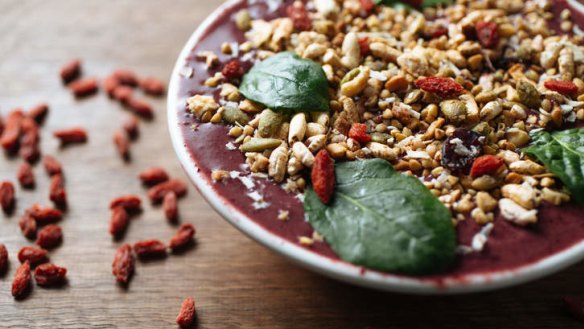
- Should this superfood be illegal?
- Puffed quinoa and goji berry muesli
- Powerhouse fruit and vegetable recipes
Kefir, chlorella, scoby, tibicos, fermentos, lactobacillus … Oh come on people, do keep up; these are some of the hottest words in superfoods right now. Kombucha, a fermented tea, leads the charge due to a resurgence of interest in fermentation. It's the new darling of intestinal health, recently honoured at the inaugural World Kombucha Conference in Los Angeles.
Brothers James and Miles McLoughlin run Green Press, a soup and smoothie outlet in Melbourne's CBD, where a blackboard lists at least a dozen ''superfood'' add-ons. There's lucuma for skin health, maca for stamina and chlorella for immunity. If chlorella has a vaguely distasteful, chemical sound, consider what it is: green algae. It comes from California.
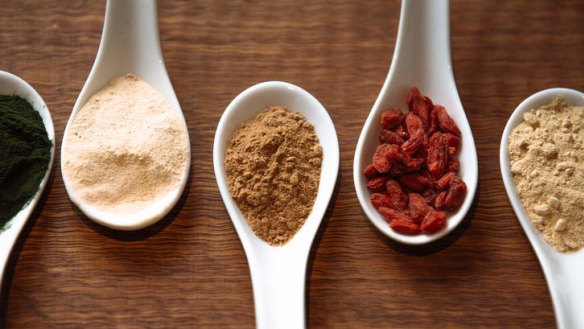
''Our biggest influences are nutritional studies coming out of the US,'' says James. ''Chlorella is not overly palatable. It's the bottom of the food chain. We smuggle it into smoothies with a few sweet things.
''I think maca will become more well known as it is powerful and unique. It improves sexual health and boosts immunity. Another personal favourite is camu camu as a serving contains 30 times the vitamin C of an orange.''
Vladia Cobrdova, Aboutlife's wellness ambassador and Sydney superfood advocate, says these ingredients have come up on her radar: sacha inchi oil (an Amazon nut oil high in omega-3); birch water and maple water (the new coconut water); and red palm fruit oil (high in antioxidants and betacarotene). And the good news? She says cultured butter from grass-fed cows is a coming back into the kitchen.
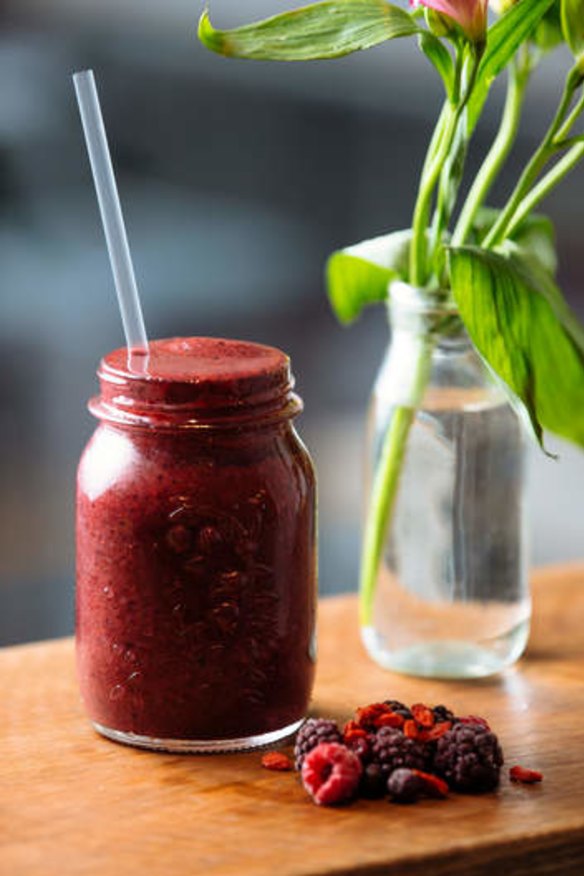
Yoko Inoue, who owns Shokuiku raw food restaurant in Melbourne ingests chlorella tablets by the handful, describing them as the highest source of chlorophyll.
She's seeing the fermented food movement taking off. ''By fermenting, nutrient levels just skyrocket,'' she says. ''I've seen more and more people avoiding fruit because they need to cut out sugars and go back to building up good bacteria, so fermented food is crucial. Fermented vegetables have already been digested by bacteria so the body doesn't have to work as hard to digest food.''
Picture a tub, crawling with bacteria and yeast. Daily, it changes until a murky, mushroom-like, rubbery solid appears. This is the start of kombucha. The solid is called a scoby (symbiotic culture of bacteria and yeast) or mother.
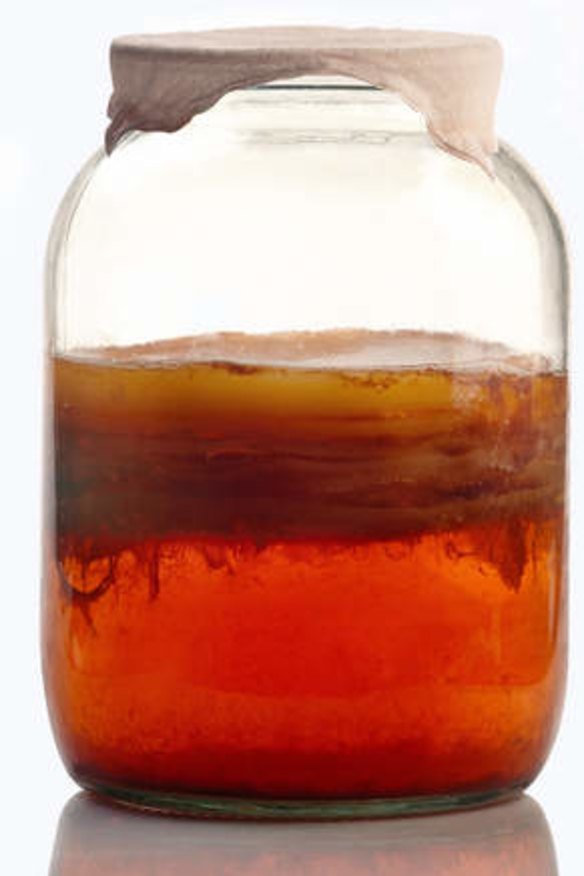
''It's pretty freaky looking.'' That, from Dr Miin Chan, who has a medical degree and has been around strange things found in laboratories. Dr Chan makes a fermented ''living probiotic'' drink called tibicos, which is also made with a scoby. Once the scoby is ready, the kombucha recipe continues. Make black tea and add sugar. Place the scoby on top, leave it for 10 days to three weeks to let it ferment, eating up all the sugars.
The kombucha I tasted was frothy, white and smelled like beer. Flavoured with ginger, it did tickly, fizzy things to the insides as it went down. It was mild and any thought that a fermented drink might taste like vinegar was off track. Bottles of the tea in retailers' fridges might be flavoured with a blend of orange blossom, passionfruit and turmeric, or hibiscus and lemongrass.
''Fermented foods are definitely the latest craze,'' says organic foodstore owner Jenny Watling. ''We went from having one range of kombucha and one range of sauerkraut to five or six of each.'' The same goes for the fermented drink kefir.
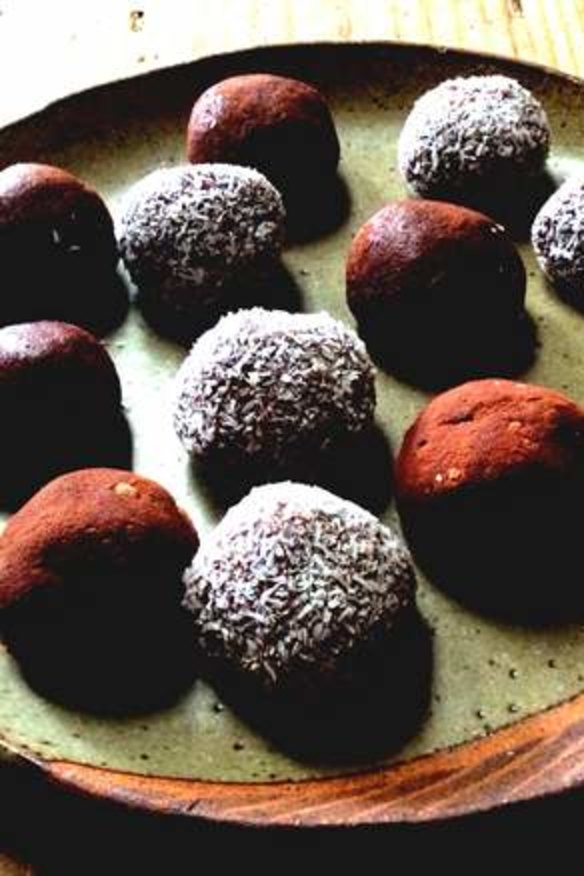
''It's gone crazy,'' says Dr Chan, whose tibicos might contain mint and ginger.
Jacqui Kirkland, a kombucha producer, was at LA's World Kombucha Conference in January. ''We are running at full steam to keep up with demand,'' she says. ''Gut health is becoming the number one focus as people delve into their health journey. Fermented foods get the good bugs back into your body.''
Kombucha's fans say it treats degenerative diseases, arthritis, pancreas and liver problems, and, mainly that it's good for intestinal health. Tibicos has been hailed for antioxidant properties and good heart health, among other things. Its lactobacillus bacteria component is said to be good for immunity, skin and hair. It's been suggested that kefir has three times as much probiotic power as yoghurt.
Lisa Renn, from the Dietitians Association, advises caution when researching superfoods. She says the internet is a frustration for her industry and the public. ''They want definite answers, but sometimes there isn't one.'' She say assess whether claims coming from governments, hospitals or bloggers?
''The role of fermented foods and probiotics is an important thing to look at. Food that contributes to the overall health of our gut is a good thing,'' Renn says. The association's position on kombucha is that there is not yet substantial research to support claims of any health benefits and there have been some reports of stomach upsets and illness linked with home-brewed kombucha, as well as suggestions it can affect liver function.
Dr Chan focuses on the digestive and probiotic properties of fermented drinks and says while they are gaining popularity among consumers, they are also fun to make. ''People who are crazy about fermenting are called 'fermentos'. Once you do it, you become almost addicted to it. Fermentation is called the cold fire. You watch this thing and it starts to bubble and it starts to have life. It's very satisfying to then eat something that's full of living things.''
While keeping up with the massive output of superfood news, the Green Press brothers also advocate foods we've all heard of such as broccoli, cauliflower and red cabbage. ''They are as nutritious as anything imported but aren't as fashionable,'' says James.
Naturopath Catie Gett has another take on what makes food super.
''It's one thing to have freeze-dried produce from the Amazon, but the endorphins released from eating something you've grown yourself, or bought straight from the farmers, has a massive impact on how your body responds to it.''
Further food for thought comes from a US study, which came to a surprising conclusion about the most nutrient-dense fruits and vegetables. Coming in at 100 per cent, take a bow humble little watercress. Ahem … kale came in at number 15 with 49.07 per cent.
Buy kombucha starter kits from Mulgrave Farmers Market in Melbourne (order on 0474 695 753) and from Aboutlife in Sydney (aboutlife.com.au), or online at gratefulharvest.com.au.
14 SUPERFOOD SIRENS
1. Camu camu: A cherry-like rainforest fruit containing vitamins and essential acids in Amazonian proportions.
2. Chinese cabbage: This has a nutrient density rating of 92 per cent.
3. Chlorella: A green algae product that may help boost your immunity.
4. Cress: Elevated from the domain of 19th-century sandwiches eaten by ladies wearing sprigs of violets, this garden greenery supposedly has a nutrient density rating of 100 per cent.
5. Dandelion greens: Every temptress has her charm, with calcium and iron apparently abundant in this weed.
6. Hemp seeds: They contain protein and omega-3 fatty acids.
7. Kombucha: Spawned from the fermentation craze, it's touted for keeping the intestines healthy.
8. Goji berries: Promoted as a Himalayan wonder with more vitamin C than some oranges and more betacarotene than carrots.
9. Lucuma: The most popular ice-cream flavour in Peru comes to us mostly in powder form. The subtropical fruit is rich in carotene and is said to be good for the skin and to protect against ageing.
10. Maca: A South American root vegetable eaten to improve energy and sexual health.
11. Pichuberries: Also known as Inca berry, this Peruvian treat is lauded for being rich in vitamin D.
12. Sacha inchi: Known as the Inca peanut, this nut is a source of omega-3 fatty acids.
13. Sauerkraut: Fermented cabbage known for its probiotic
14. Watercress: This has a nutrient density rating of 100 per cent.
CAN HEMP GET YOU HIGH?
Hemp seed sales are on the rise. The seeds taste delicious, are highly nutritious yet come with a whiff of illegality.
Two stockists contacted by Fairfax Media were too nervous to be named in this article.
''I've heard of recent crackdowns on retailers,'' said one.
Hemp seeds are readily available in shops, but trade occurs on a ''don't ask, don't tell'' basis. It is illegal to sell them for human consumption. They can be sold as ingredients for a facial scrub, for example, but a shopkeeper can't sell them to a customer who divulges an intention to sprinkle them on cornflakes. This is despite no evidence that you can get high on hemp seeds or hemp-seed oil.
''Drink as much hemp-seed oil as you like. It's not going to happen,'' says one retailer who is often asked about its powers.
''Hemp contains no or very low levels of THC, the chemical associated with the psychoactive properties of marijuana,'' according to Food Standards Australia New Zealand. The authority says hemp seeds do, however, contain protein, vitamins, minerals and omega-3 fatty acids. FSANZ considers hemp to have THC levels sufficiently low to make it safe for consumption.
A ministerial review about the legality of hemp seed, taking into account the FSANZ position, was due to conclude last week, but is now expected to go on until later this year. The last review was in 2002, when health ministers rejected a bid to legalise food derived from hemp, saying it could send a confused message to consumers and could affect drug-testing results.
''We have to position them at a certain place in the store,'' explains one retailer. ''That's why they're with the cleaning products, rather than with the rest of our superfoods.''
Hemp seed stockist Francesca Boch urges change. ''If there's a debate, there will be a bombardment. People want to make up their own minds. Eighteen months ago, I sold one packet every three to four weeks. Now I'm selling 10 packets a week.
''We could get into trouble if we sell it as food, so we are very diplomatic about how we term it.''
Out of earshot of customers, a staff member launches into an enthusiastic description of her hemp-seed protein balls. The nutty-flavoured seeds can be sprinkled on salads, and hemp-seed milk (a blend of seeds and water) can be added to smoothies.
Raw hemp-seed chocolate fudge balls
1 cup hulled hemp seeds
½ cup raw cacao powder
pinch of salt
dash of vanilla extract (organic and cold extracted, if possible)
¼ cup extra virgin cold-pressed coconut oil, melted
6 medjool dates, pitted
1. Put all the ingredients into a blender and whiz until smooth.
2. Roll the mix into balls.
3. Roll them in your choice of coating, such as cocoa powder or desiccated coconut, and set them in the fridge until firm.
Basic kombucha
You need 10 to 20 per cent KT (kombucha tea) in your vessel at start of ferment, a large open-mouthed glass vessel and calico or fine mesh cheesecloth and band.
kombucha tea (KT) and scoby
tea (black organic preferred)
sugar (raw organic preferred)
filtered water (free of chlorine)
1. Calculate how much KT you have to start with and what size your brewing vessel is. Then calculate how much fresh brewed tea you will need to make up your brew. (The basic ratio: 1 cup of sugar, 8 bags of tea, and 2 cups starter tea per 4 litre batch. One scoby will ferment any size batch, though larger batches may take longer.)
2. Prepare fresh tea, equipment and workspace, ensuring good hygiene. Sterilise the brew vessel (avoid chlorine and detergent residues).
3. Place scoby and KT in vessel, add cooled fresh tea. Cover with calico and place in warm, well-ventilated space, away from direct sunlight.
4. Ferment can take 7 to 21 days. Taste and bottle kombucha when ready, reserving scoby and enough KT for your next batch. Refrigerate.
Restaurant reviews, news and the hottest openings served to your inbox.
Sign up